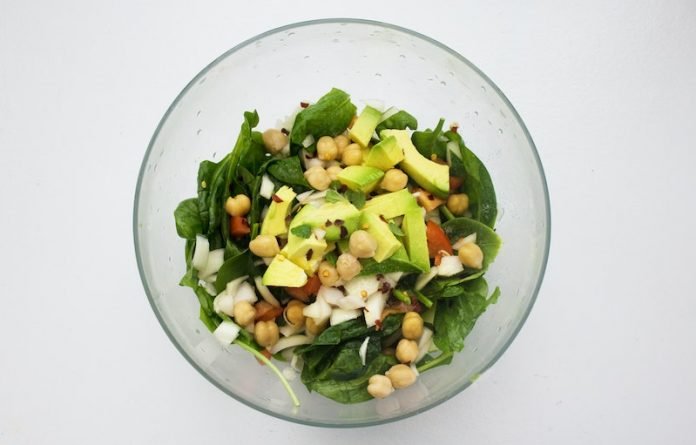
If you know anything about healthy eating, you’ve probably heard that the benefits of Mediterranean-style eating are as clear as the crystal sea at a Greek island getaway.
But for someone just testing the waters of heart-healthy eating, the specifics of such a diet can get a little murky. That’s because its definition can vary.
Mediterranean-style eating is not necessarily about eating so many servings of a particular food at each meal, said Catherine M. Champagne, professor of nutritional epidemiology and dietary assessment and nutrition counseling at Louisiana State University’s Pennington Biomedical Research Center in Baton Rouge.
“It’s more of a pattern.”
In general, that pattern includes:
‒ Fresh fruits and vegetables.
‒ Nuts, beans and whole grains.
‒ Olive oil as the principal source of fats, as opposed to butter or margarine.
‒ Fish and other seafood.
‒ Limiting consumption of red and processed meat, sugary sweets, processed foods and some dairy.
It’s an eating pattern rooted in the traditional habits of people in countries that border the Mediterranean Sea, where rates of heart disease tend to be lower and life expectancies after age 45 have been among the highest in the world.
The details of what makes a Mediterranean diet can shift from country to country, Champagne said. But repeated studies have linked it to lower cardiovascular risk.
One study, published in 2018 in JAMA Network Open, found that among nearly 26,000 U.S. women followed for up to 12 years, adherence to such a diet was associated with a one-quarter lower risk of any of four cardiovascular events, including heart attack and stroke.
Mediterranean-style eating was incorporated into the recent update of an American Heart Association tool for evaluating heart health.
The tool, Life’s Essential 8, produces a score based on eight easily measured assessments: diet, physical activity, nicotine exposure, sleep health, body weight, blood lipids (cholesterol and other fats), blood glucose and blood pressure.
Easily measured assessments: diet, physical activity, nicotine exposure, sleep health, body weight, blood lipids (cholesterol and other fats), blood glucose and blood pressure.
The experts behind Life’s Essential 8 supported both Mediterranean-style eating patterns and DASH, or Dietary Approaches to Stop Hypertension, which have many similar components.
In individuals, Life’s Essential 8 rates diet based on a screening tool for what’s called the Mediterranean Eating Pattern for Americans.
Christy Tangney, a professor of clinical nutrition and preventive medicine at Rush University Medical Center in Chicago, helped create that 16-question screening tool.
One of the hallmarks of Mediterranean-style eating is its flexibility, she said. Research done in Spain on Mediterranean eating, for example, includes sofrito, a sauce made of olive oil and vegetables commonly eaten there.
Tangney’s “Americanized” screener leaves sofrito out, because it’s rarely seen in U.S. diets, but adds berries.
Mediterranean-style eating works, Champagne said, in part because of how it affects cholesterol in the bloodstream.
The Mediterranean diet lowers “bad” LDL cholesterol, and research suggests it either doesn’t affect “good” HDL or slightly increases it, she said.
The bottom line, Champagne said, is simply: “We’ve seen lots of heart health benefits with a Mediterranean diet.”
That does not mean it’s perfect. People trying to lose weight will still need to cut back on calories.
And Tangney said it can be a challenge for Americans to embrace whole grains, walk away from processed foods and ease up on dairy products such as cheese.
Also, access to the fresh fruits, vegetables and other foods in a Mediterranean eating pattern can be a challenge for people with low incomes, said Dr. Annabelle Santos Volgman, a professor of medicine at Rush University Medical Center.
Understanding the role of wine can also be tricky. Moderate wine drinking – one to two drinks a day – has been considered part of the diet. But Volgman, who worked with Tangney to develop the screening tool, said the possible benefits from wine are outweighed by the potential harms.
Federal guidelines recommend that people who don’t drink alcohol should not start, and for those who do drink, less is better for health.
Such caveats aside, adopting aspects of Mediterranean eating can be easy.
Embracing extra virgin olive oil for cooking or in salad dressings is one place to start, Tangney said. Eat leafy greens daily. “When you look at your plate, the largest part of your plate should be vegetables,” she said.
For protein, a Mediterranean eating plan would have you cut back on red meat, so try fatty fish – such as anchovies, salmon, mackerel, tuna or sardines – once or twice a week.
Beans are also a good protein source; Tangney suggests having them three times a week. Eat nuts or fresh fruit instead of sweets for dessert.
Champagne said breakfast could include an olive oil spread on whole-wheat toast, and possibly an egg. A dinner of salmon with pilaf and a large portion of stir-fried vegetables could work, she said.
Pastas should be whole grain. And people who don’t enjoy lots of olive oil can find healthy fats in nuts or avocados instead.
Diet isn’t the only part of Mediterranean living that’s important for heart health. The eating pattern is historically associated with lifestyles that include exercise and social activity.
But the flexibility that makes Mediterranean-style eating hard to define can make it easy to embrace.
“People love choice,” Tangney said. “Nobody wants to be dictated to.”
Written by Michael Merschel.
If you care about nutrition, please read studies that green tea may protect your body as a vaccine, and cooking food in this way may raise your risk of blindness.
For more information about nutrients, please see recent studies about why diet drinks make you gain more weight, and results showing avocados can support a heart-healthy diet.



